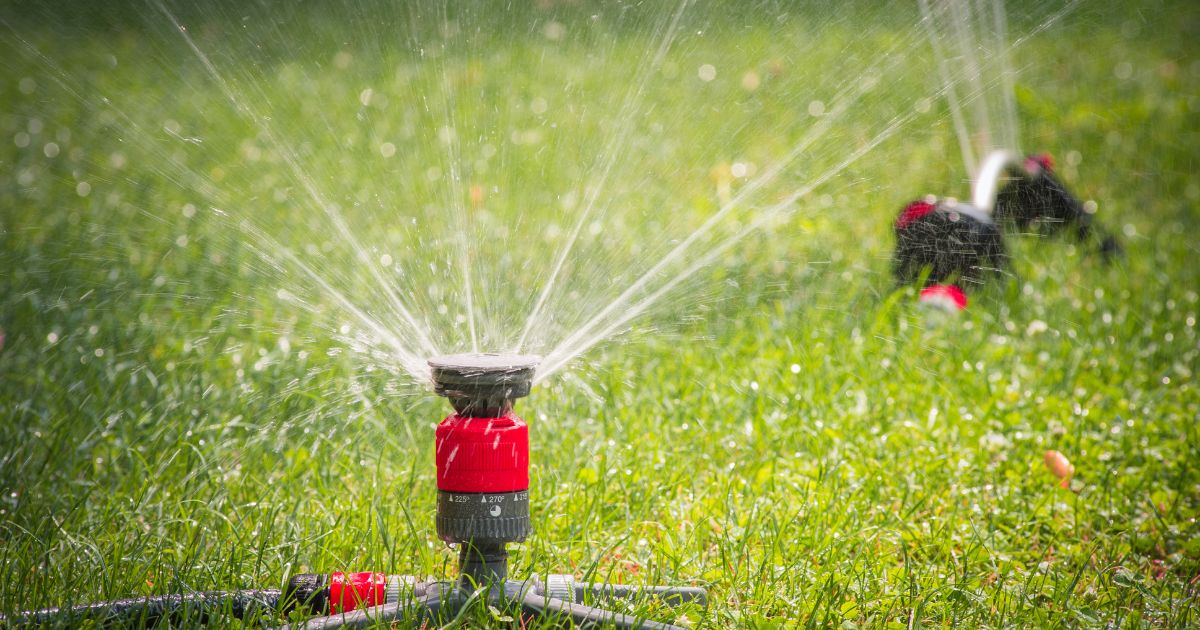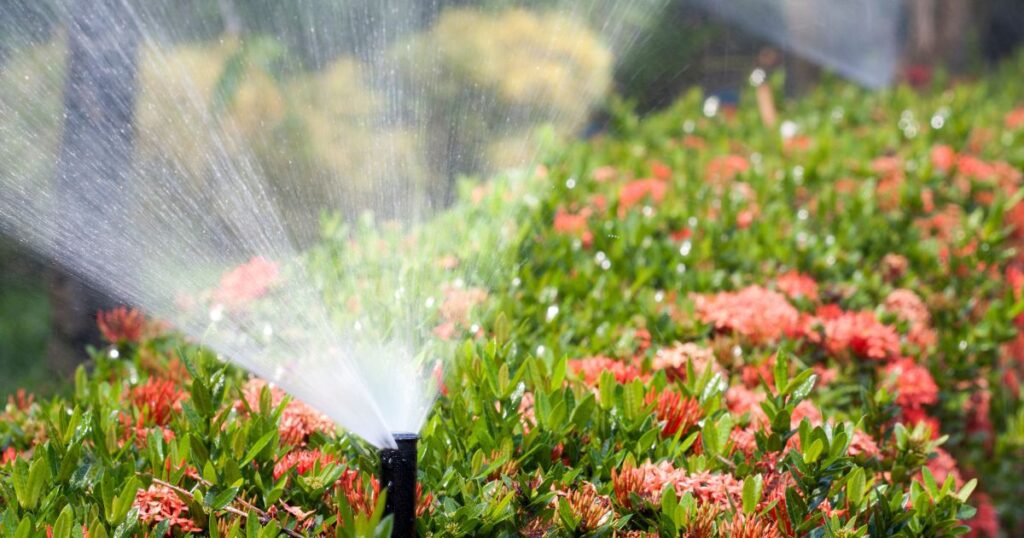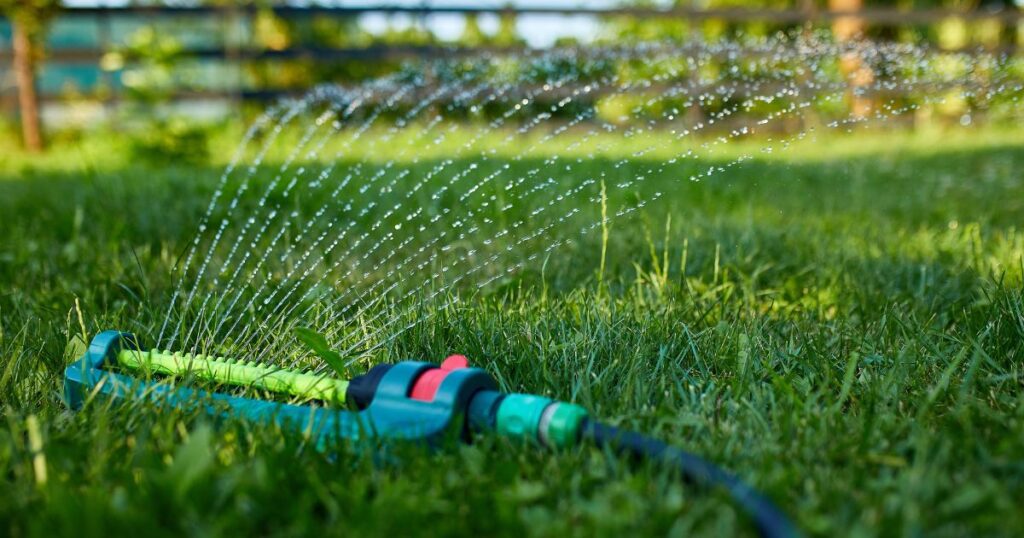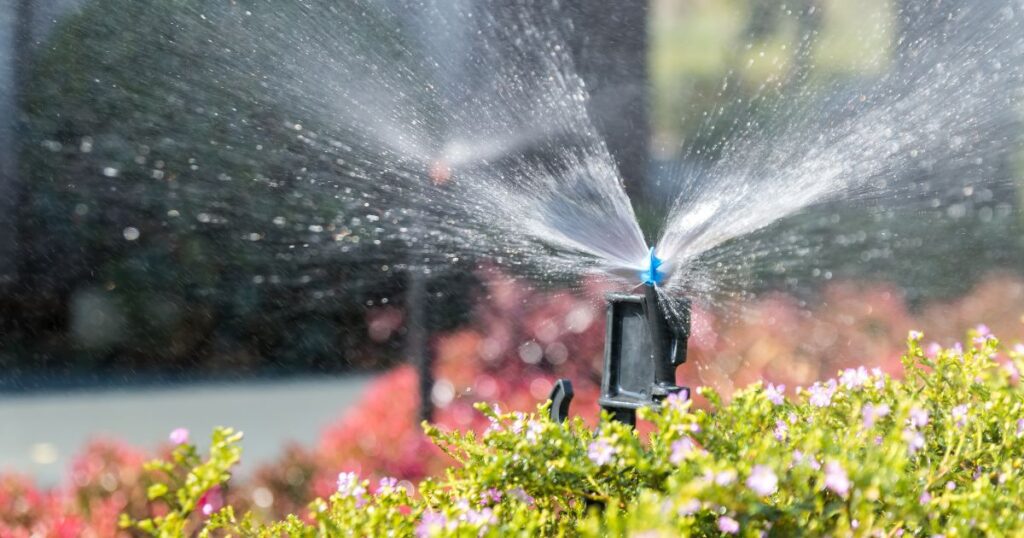
Are your sprinkler heads playing a sneaky game of hide-and-seek in your yard? Don’t fret, dear reader! We’ve got some top-secret tips and tricks up our sleeves to help you track down those elusive sprinkler heads and bring them into the spotlight. So, put on your detective hat, grab your magnifying glass, and get ready to embark on a thrilling adventure of sprinkler head discovery. The search is on, and the excitement is about to burst through the sprinkler spray!
To locate sprinkler heads, start by examining your yard for any signs of small protruding objects or slight depressions in the ground. You can also use a metal detector to help locate the metal components of the sprinkler heads. If all else fails, you can try using a probe or carefully digging in areas where you suspect the sprinkler heads might be located.
Importance of Learning How to Locate Sprinkler Heads
Sprinkler systems are installed with efficiency in mind since they automatically water designated zones at specific times based on weather conditions and soil moisture levels. However, damaged or missing sprinkler heads can cause uneven watering leading to dry spots or overwatering—causing fungal infections that ruin plants’ health.
Knowing where each sprinkler head is located can help ensure the even distribution of water across all areas being irrigated. It enables you to inspect and adjust individual nozzle settings during regular maintenance routines quickly.
Regular inspections are critical in identifying issues early on before they turn into significant problems that may require more expensive repairs. Plus, by identifying potential problems earlier on, you can save money on costly water bills caused by inefficiencies.
Overview of The Process
The process involved in locating sprinkler heads will vary depending on whether your property has a new or old irrigation system, for newer models that come with accurate GPS mapping systems installed during installation periods, when assessing the layout design, starts by inspecting every area of your property. It is crucial to identify the location of every sprinkler head and mark them for ease of access.
For older models without GPS, the process will require you to identify the location of each head manually; this may seem like an uphill task, but it’s worth it in the long run. The first step is to get a copy of your irrigation system’s blueprint or map if you don’t already have one.
This map should indicate where each sprinkler head is located. The next step is conducting a visual inspection of your landscape.
Walk around areas where you know there are sprinkler heads and look for any signs that a sprinkler might be nearby, such as slight depressions in the ground or vegetation that appears greener than its surroundings. Once you locate a few heads, use these locations as reference points to find others until you have marked all the heads.
A high-level overview of locating sprinkler heads
Finding the location of sprinkler heads on an irrigation system can be a daunting task, particularly when it comes to locating buried or hidden heads. However, with a combination of knowledge about the system and some tools at your disposal, you can easily locate and maintain your irrigation system.
Understanding the layout of the irrigation system
To locate your sprinkler heads, you need to have a clear understanding of how your irrigation system is laid out. For instance, knowing whether it is a spray or drip type will help identify potential locations where the heads are likely to be found.
You also need to know where the water comes from and how it is distributed throughout the entire area. This knowledge will help you identify areas that may require more attention than others when trying to locate sprinkler heads.
Using a map or blueprint to identify potential locations
Maps or blueprints provide an easy way to visualize an entire irrigation system in one go. You can use them to understand how individual components are connected and locate potential locations where sprinkler heads may be located.
An accurate map should show all aspects of the irrigation system, including piping details, valves, pumps, and any other essential equipment used in regulating water flow. By using this information, you can easily narrow down possible areas where your sprinklers are located.
RELATED: How To Adjust K Rain Sprinkler Heads: Expert Tips
Conducting a visual inspection
A visual inspection helps identify areas that might not be immediately apparent on maps or blueprints. It involves walking around the area being irrigated while looking for physical signs such as grass discoloration around buried pipes or depressions in the soil around hidden sprinklers.
During this process, pay attention to anything unusual such as damp spots on the dry ground indicating leaking pipes or any irregularities that could suggest broken sprinklers. To conduct a proper visual inspection, start at the point where water enters the system and follow it to its endpoint.
This will help you identify any potential issues in the irrigation system and locate all sprinkler heads. Locating sprinkler heads is a critical component of any effective irrigation system.
With some basic knowledge of how the system works, a map or blueprint, and a visual inspection, you can easily locate buried or hidden sprinklers within your area of coverage. The process may seem like an uphill struggle initially, but with time and patience, any homeowner can master this important skill.
Using a Metal Detector to Find Buried Heads
Submerged sprinkler heads can be tough to locate as they are buried deep underground. Using a metal detector is an efficient way to find them.
It’s essential to ensure that your metal detector is specifically designed for finding irrigation systems, as ordinary metal detectors may not pick up subtle signals from the buried heads. To begin, turn on the system and carefully run the metal detector over the grass where you expect the buried heads.
A strong signal will indicate that you found a sprinkler head or valve box. Make sure always to mark each head location as you go along before moving on to avoid losing track of already found heads.
It’s important to note that if there are multiple systems in place, each with different types of pipes, valves, or other materials, use different detectors specific for those systems. Some pipes and materials have magnetic properties while others do not; thus, using a generic metal detector can give false readings.
Checking for Water Pressure Changes to Locate Hidden Heads
Another method of locating hidden sprinkler heads involves checking water pressure changes at different points in the sprinkler system. Start by reviewing schematics or blueprints of your irrigation system and locate zones with multiple sprinklers running concurrently. If the water pressure is less than expected in certain areas within these zones, chances are high. There may be an unknown obstruction, like debris, causing a low water flow rate around a hidden or clogged head.
To determine if low water pressure indicates the presence of a hidden head, remove one end cap from one of these zones and insert a pressure gauge (available at any home improvement store) into the exposed end. Record the gauge reading after letting it run for approximately 5 minutes, then repeat this process for each zone with suspected low water flow rates until all possible locations are checked off your list.
Utilizing Thermal Imaging Technology to Spot Underground Pipes and Valves
Thermal imaging technology is a non-invasive method of locating underground pipes and valves by detecting temperature differences. It works by using infrared technology to pick up the heat signature of objects, which then shows up as color variations in the image.
To use this method, make sure your irrigation system is turned on and operating at full capacity. Thermal imaging cameras will only pick up temperature differences in running water systems that have reached an equilibrium point.
Take pictures of the entire area during operation, including any visible above-ground components. Pay close attention to areas around valves or other pipes that are designed for draining to avoid missing any potential irrigation system components.
Once you have captured images of the entire area, analyze them carefully to look for any unusual variations that may indicate a hidden sprinkler head or valve box. These niche subtopics can be incredibly useful when trying to locate hidden sprinkler heads or underground pipes.
Using a metal detector or checking for water pressure changes are efficient methods for finding buried heads, while thermal imaging technology can help detect underground pipes and valves. Always keep detailed records of your findings and mark each head’s location immediately after it’s found to avoid losing track when searching for multiple subsurface components at once.
Rarely known small details on locating sprinkler heads
Looking for signs of wear and tear on grass or soil around the head
When it comes to finding sprinkler heads, one area that is often overlooked is the grass or soil surrounding the head. Over time, sprinkler heads can become damaged and start to leak, causing excess water to pool around the base of the head. This can cause noticeable wear and tear on both the grass and the soil surrounding it.
Look for areas where the grass is discolored or dying, as this could be a sign of a leaking system. Another sign to look for is an uneven lawn.
If one area of your lawn appears greener than others, this may indicate that there is an issue with your irrigation system. By inspecting these areas more closely, you may be able to identify where a hidden sprinkler head may be located.

Checking for discoloration in the grass due to overwatering
Overwatering your lawn can also lead to discoloration in your grass, which could help you locate sprinkler heads that are not easily visible. When too much water is applied in one area, it can cause the roots of your lawn to become waterlogged and begin to rot.
This can cause yellowing or browning of grass blades near overwatered areas. If you notice any discoloration or unusual patterns in your lawn’s coloration, it could indicate an overactive sprinkler head nearby.
Listening for sounds of water flow when the system is not running
One way to locate hidden sprinkler heads is by listening carefully for sounds of water flow when your irrigation system is not running. Turn off all sources of noise around you and listen carefully while standing near potential locations. If you hear any faint hissing sounds coming from underground pipes or valves when the system is not in operation, this could indicate a leaking or malfunctioning sprinkler head.
RELATED: How to Adjust a Hunter Sprinkler: A Comprehensive Guide
Frequently Asked Questions
How do you find a sprinkler head without digging it?
To find a sprinkler head without digging, you can use a metal detector or a magnetic locator to detect the metal components of the sprinkler head underground.
Is there a tool to find sprinkler heads?
Yes, there are specialized tools available, such as sprinkler head locators or underground pipe locators, designed to specifically locate sprinkler heads without the need for digging.
How do I know where my sprinkler heads are?
To determine the location of your sprinkler heads, you can refer to the original landscape design or irrigation system layout plan. Alternatively, you can visually follow the path of the irrigation pipes above ground or look for signs of water spray patterns on the grass.
How do I find a sprinkler head without turning the water on?
To find a sprinkler head without turning the water on, you can visually scan the landscape for small, circular or rectangular caps or markers that indicate the presence of sprinkler heads.
How deep are sprinkler heads buried?
Sprinkler heads are typically buried at a depth of around 4 to 6 inches (10 to 15 centimeters) below the ground surface.
How do I find hidden sprinkler valves?
To find hidden sprinkler valves, start by identifying the location of the main water supply line entering your property. Then, follow the line to search for valve boxes or underground access points that house the sprinkler valves.
Conclusion
After reading this article, you are now equipped with knowledge on how to locate sprinkler heads in a variety of ways. Always keep in mind the importance of locating sprinkler heads, as it can save time, money, and water. Additionally, regular maintenance and inspections should be done to ensure that your irrigation system is running efficiently and effectively.
Understanding the layout of your irrigation system and using a map or blueprint can help identify potential locations for sprinkler heads. Conducting a visual inspection can also assist in locating existing sprinkler heads.
Additionally, utilizing niche subtopics such as metal detectors or thermal imaging technology can provide alternative methods for finding buried or hidden sprinkler heads. Furthermore, knowing the rarely known small details, such as checking for wear and tear on the grass around the head or listening for sounds of water flow when the system is not running, can also be useful in identifying potential issues with your irrigation system.
Remember that regular maintenance and inspections are essential to guarantee that your irrigation system is functioning optimally. By following these tips and being proactive about maintaining your irrigation system, you can save water usage while ensuring a healthy lawn.
An Optimistic Outlook
By taking these steps towards maintaining an efficient irrigation system, you are not only saving time but also protecting our environment by reducing unnecessary water usage. Remember that every little effort counts towards achieving sustainability goals globally!






